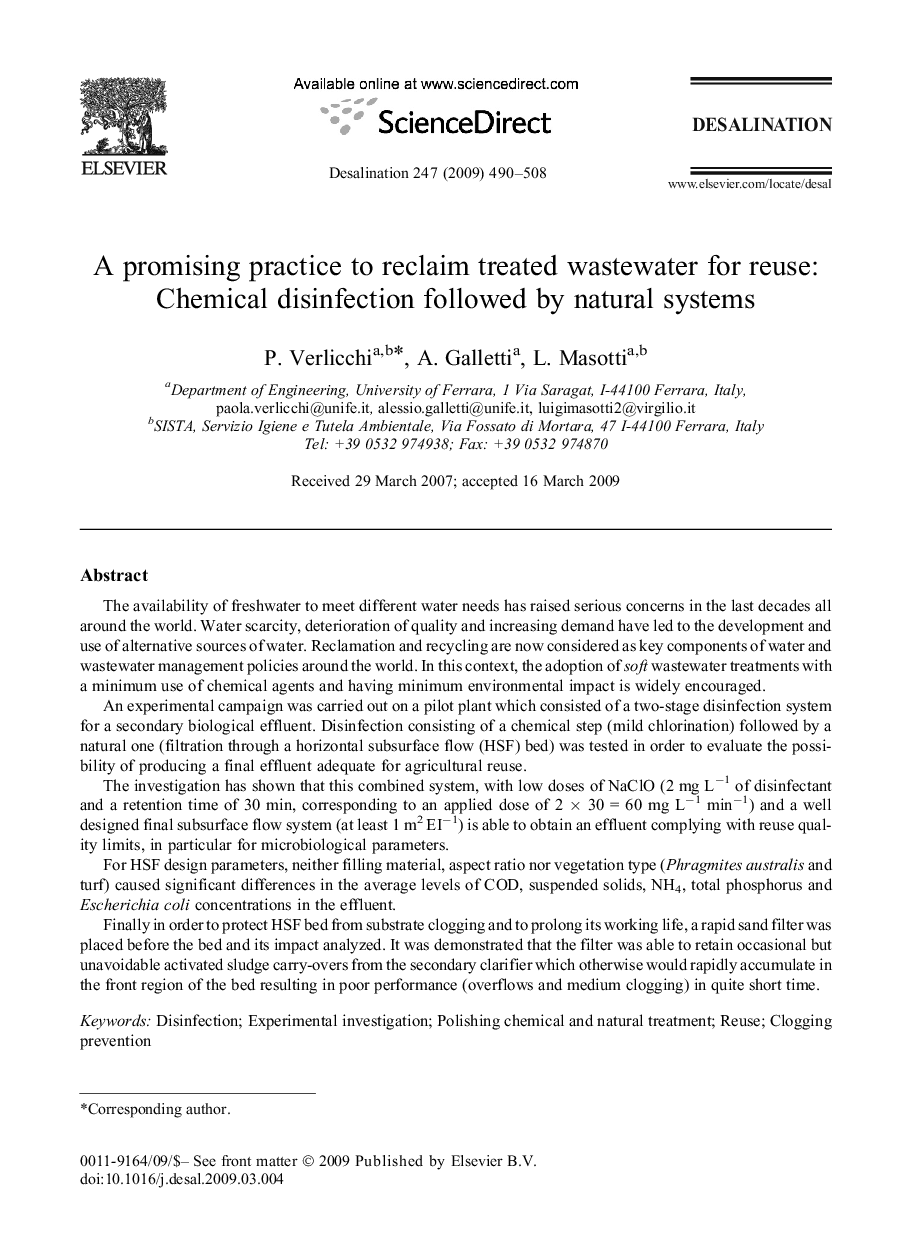| کد مقاله | کد نشریه | سال انتشار | مقاله انگلیسی | نسخه تمام متن |
|---|---|---|---|---|
| 626562 | 1455443 | 2009 | 19 صفحه PDF | دانلود رایگان |

The availability of freshwater to meet different water needs has raised serious concerns in the last decades all around the world. Water scarcity, deterioration of quality and increasing demand have led to the development and use of alternative sources of water. Reclamation and recycling are now considered as key components of water and wastewater management policies around the world. In this context, the adoption of soft wastewater treatments with a minimum use of chemical agents and having minimum environmental impact is widely encouraged.An experimental campaign was carried out on a pilot plant which consisted of a two-stage disinfection system for a secondary biological effluent. Disinfection consisting of a chemical step (mild chlorination) followed by a natural one (filtration through a horizontal subsurface flow (HSF) bed) was tested in order to evaluate the possibility of producing a final effluent adequate for agricultural reuse.The investigation has shown that this combined system, with low doses of NaClO (2 mg L−1 of disinfectant and a retention time of 30 min, corresponding to an applied dose of 2 × 30 = 60 mg L−1 min−1) and a well designed final subsurface flow system (at least 1 m2 EI−1) is able to obtain an effluent complying with reuse quality limits, in particular for microbiological parameters.For HSF design parameters, neither filling material, aspect ratio nor vegetation type (Phragmites australis and turf) caused significant differences in the average levels of COD, suspended solids, NH4, total phosphorus and Escherichia coli concentrations in the effluent.Finally in order to protect HSF bed fromsubstrate clogging and to prolong its working life, a rapid sand filter was placed before the bed and its impact analyzed. It was demonstrated that the filter was able to retain occasional but unavoidable activated sludge carry-overs fromthe secondary clarifier which otherwise would rapidly accumulate in the front region of the bed resulting in poor performance (overflows and medium clogging) in quite short time.
Journal: Desalination - Volume 247, Issues 1–3, October 2009, Pages 490-508